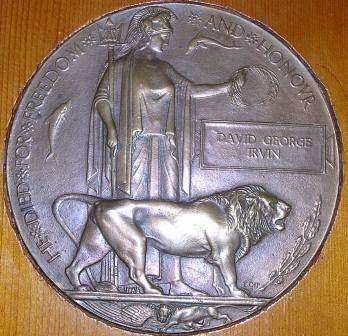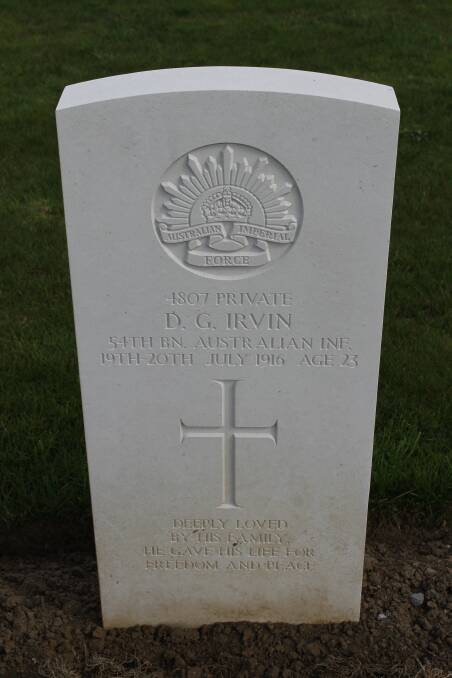Three South Coast men lost their lives a century ago this week in Australia’s most tragic, most costly military engagement, the Battle of Fromelles (or Battle of Fleurbaix as it is also known).
Subscribe now for unlimited access.
or signup to continue reading
The first to die was William Dunn of Tathra.
He was killed two days before the battle while his Battalion was moving into the trenches in preparation for the planned assault.
“In some ways he was a lucky,” local World War 1 historian Peter Lacey said.
“At least his body was recovered and he was afforded a proper burial and, unlike his mates in his Battalion, he was never faced with an almost-certain death when British and Australian troops were ordered to attack a German stronghold in broad daylight early on the evening of July 19, 1916.”
“This was a battle that should never have been initiated and was a battle, however it is viewed in the scheme of things, was always destined to be inconsequential,” Mr Lacey said.
“But it was the first major engagement involving Australian troops on the First World War Western Front…and it became Australia’s most costly battle of the war – and, in fact, Australia’s most costly battle ever. It resulted in 5533 Australian casualties – including 1917 deaths.
“The Australian and British soldiers were ordered to advance 350 yards over an absolutely flat, open plain that was little better than a bog, towards a high ridge that was well-defended by German machine-gunners.
“So the Australian attackers were simply mown down by the German machine-gunners and, effectively sent to their deaths,” he said.
Among those killed in the action were “Lawrie” Robinson of Burragate and David Irvin of Bemboka.
An eyewitness recorded that Mr Robinson was carrying a scaling ladder and was about half way across the field when he was “shot through the neck, just below the ear, and was killed instantly”. His body has never been recovered.
Mr Irvin’s body was retrieved by the Germans after the battle and, along with many other Australians, was buried in a mass grave just outside the little town of Fromelles.
It was exhumed seven years ago, positively identified using DNA testing, and then re-buried in a new Pheasant Wood Cemetery nearby.

“Unfortunately the Australian government and the Australian army were ill-equipped at the time to adequately look after those back home who were affected by a soldier’s death or wounding, and the nightmare that David Irvin’s parents then had to endure is a textbook example of what too-often happened during WW1,” Mr Lacey said. (see breakout below)
However, there is one “happy ending” to Mr Irvin’s tragic death.
A few years ago his ‘Dead Man’s Penny’ – a large medallion presented to the families of every British and Empire serviceman killed in WW1 – was advertised for sale on eBay and purchased by an organisation called Lost Medals Australia.
It was then returned to the Irvin family, who were still living in the Bemboka area.
On Saturday, September 17, at the Bega Pioneers’ Museum Peter Lacey will highlight many of the most memorable songs from the WW1 era. Those attending will receive a free 44-page songbook plus a CD of the songs. Places are strictly limited. To reserve a seat, phone 6492 1453.

How not to tell Mum and Dad
On July 19, 1916, David Irvin from Bemboka was killed in the Battle of Fromelles.
Eighteen days later his parents were sent a telegram reading “regret reported son Private David G Irvin wounded. Will promptly advise anything further received.”
This was the start of a nightmare for them.
A month later, having received no further information, his mother wrote to the army.
The army knew by now he was (at best) wounded and missing but replied “no (further) report has been received concerning your son”.
Five-and-a-half-months after his son had been killed and having no further information from the army, David’s father wrote to the army seeking more information and received a reply again indicating “no further information has been received concerning your son”.
So two-and-a-half-months after that, still having heard nothing from the authorities, his mother wrote yet another letter to the army, to then be advised that her son was “previously reported wounded, now reported wounded and missing, since 19/20 July 1916”.
And only on March 31, 1917, – nine-and-a-half-months after he had actually been killed, and several weeks after the army had received his personal Identification disc from the Germans – were they sent a telegram admitting David had actually been Killed in Action.
His mother and father’s concerns about David’s fate and their subsequent grief could not have been assuaged by the fact that his body had not been recovered.
Hopefully they finally received some solace from a memorial service held at Christ Church Bemboka on April 22, 1917, for David and another local, Henry Chapman, who had been killed almost a year after David while helping construct a railway near the then-very active Somme battlefield.
Many other South Coast families suffered similarly appalling treatment from the authorities in WW1.
The Australian government was simply ill-prepared and ill-equipped to look after the families back home of the 200,000 Australians who were killed or injured during the war.
RELATED LINKS

